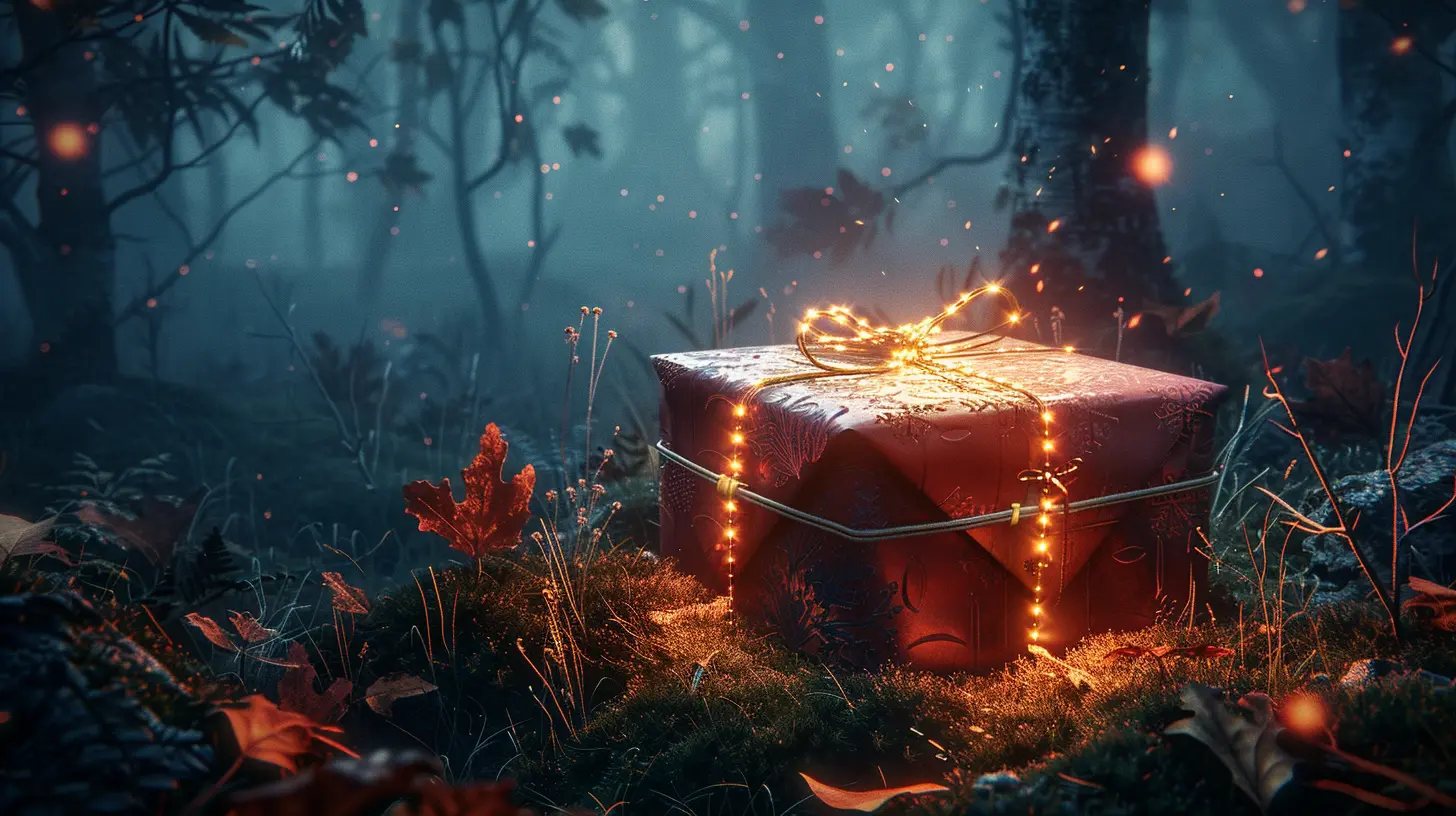Seasonal In-Game Purchases: Do Limited-Time Offers Pressure Gamers?
8 August 2025
If you’ve been gaming regularly over the past few years, chances are you’ve encountered those flashing banners, countdown timers, and eye-catching pop-ups screaming, “Only 3 Days Left to Get This Rare Skin!” or “Limited-Time Bundle—Get It Now Before It’s Gone!” Sound familiar? Yeah… it’s become a pretty common sight in modern games.
You’re not alone if you’ve ever felt that subtle—or not-so-subtle—urge to click the “buy” button just because you know that offer won’t be around tomorrow. But the big question is: _Are these seasonal in-game purchases putting too much pressure on gamers?_ Or are they just harmless fun that spices up the game?
Let’s dive into this digital rabbit hole and break it all down.
🎮 What Are Seasonal In-Game Purchases, Anyway?
Let’s start with the basics.Seasonal in-game purchases are special items, skins, bundles, or upgrades available in a game for only a short period—usually tied to events, holidays, or major game updates. Think of Fortnite’s Halloween skins, Christmas-themed loot boxes in Overwatch, or limited-time weapon camos in Call of Duty.
These items are often purely cosmetic (aka they don't give players a competitive edge), but sometimes they can include powerful gear or exclusive access. Either way, they're designed to create an irresistible mix of urgency and exclusivity.
And the best part (or the most dangerous part, depending on your wallet)? They're just a click away.
⏳ The Power of the Countdown Clock
Ever noticed how a ticking clock can make your heart race?Time-limited offers use something called _FOMO_—Fear Of Missing Out. It's a psychological trigger that makes us act quickly so we don't lose a unique opportunity. The countdown clock is a genius marketing trick that turns casual interest into hurried decisions.
It’s a bit like seeing your favorite snack on sale, but only for the next hour. You might not even _need_ that snack, but suddenly, it feels urgent. That’s what’s happening in your brain when that bright red timer ticks down in your game’s store.
Do you actually want that exclusive winter warrior outfit? Or are you just afraid you’ll never see it again?
🧠 The Psychology Behind the Pixels
Game developers are no strangers to how the human brain works. They’ve tapped into a mix of behavioral psychology and marketing to design these seasonal offers purposefully.Let’s break it down:
- Scarcity creates value. When something’s rare or limited, we automatically think it’s more valuable.
- Urgency triggers action. Add a time limit, and suddenly we feel like we have to act _now_.
- Exclusivity fuels pride. Owning something not everyone has? That’s instant gaming street cred.
It’s not just a pretty outfit—it becomes a trophy, a badge of honor, a digital flex.
But here’s the twist—while these tactics are smart business, they can mess with our minds if we’re not careful.
💸 When Excitement Turns Into Pressure
Let’s be honest. We all love a good deal. And there’s nothing wrong with treating yourself to an in-game item now and then.But there’s a fine line between _spending for fun_ and _feeling pressured to buy_.
That pressure can come in different ways:
- Social pressure: Friends have the new item, and you don’t? FOMO strikes hard!
- Time pressure: “Only 24 hours left!” feels urgent—even when it shouldn’t be.
- Completion pressure: You want to finish a collection or earn 100% of the rewards, and missing one item can be frustrating.
Over time, all of this can turn a relaxing game into a stressful experience. And let’s not even talk about the impact on your bank account.
🕹️ Gamers Speak Out: Mixed Feelings
Many gamers are torn when it comes to seasonal offers. On one hand, they love the fresh content. On the other, they don’t love feeling _manipulated_.Just jump on Reddit or any gaming community, and you’ll see a mix of hot takes:
- “I love the Halloween events—always a blast!”
- “I caved and bought the holiday bundle because I didn’t want to miss out... again.”
- “The pressure is real. These time-limited skins are stressing me out.”
Clearly, this isn’t a black-and-white issue. It all depends on how developers handle it—and how players manage it.
🧭 Finding Balance: Enjoying Without Overspending
So how can we keep enjoying seasonal in-game content without it turning into a pressure cooker?Here are a few tips that might help:
1. 🚦 Set a budget
Even $5 here, $10 there can add up fast. Decide upfront how much you’re comfortable spending each season, and stick to it.2. 🔄 Use the “24-Hour Rule”
If you see a tempting offer, wait 24 hours before buying. If you still want it the next day—and it fits your budget—go ahead.3. 🧰 Focus on what adds value
Ask yourself: “Will this item actually enhance my gaming experience? Or am I just buying it because it’s limited?”4. 💬 Talk with your gaming friends
Sometimes FOMO gets stronger when your squad starts flexing their new skins. But having open convos can help break the pressure cycle.5. 🧘♂️ Remember: It’s just pixels
This one’s easy to forget, but important. No matter how cool the seasonal skin, it’s not the end of the world if you miss it.🎉 The Good Side of Limited-Time Offers
Okay, okay—enough with the doom and gloom. Let’s not forget: seasonal in-game purchases _can_ be really fun!They can breathe new life into a game, offer moments of surprise, and give players something to look forward to. When done well—and handled responsibly—they can spark joy without causing stress.
Think about how festive it feels when your favorite game updates its maps with snow for Christmas or spooky music for Halloween. Throw in some exclusive outfits and themed items, and it’s like a virtual celebration. 🎊
Many players _love_ the seasonal vibe, and for good reason—it creates memories and keeps the game fresh.
🎯 Should Game Developers Dial It Back?
So, what role do developers play in all this?It's easy to point fingers, but many studios genuinely want to balance monetization with player satisfaction. After all, if they push too hard, they risk turning loyal users away.
Some developers have started to:
- Bring back older limited-time items later.
- Add “preview” modes so players can try before buying.
- Offer in-game ways to earn premium currency.
- Clearly label cosmetic vs. pay-to-win items.
These are all good steps, but more transparency and player-first thinking would go a long way.
🤝 Final Take: Power to the Players
At the end of the day, the gaming world is evolving—and so are we as players.Seasonal in-game purchases aren’t going anywhere. But the good news? We’re becoming more aware, more mindful, and more empowered in how we choose to engage with them.
So next time that flashy limited bundle tries to lure you in, take a deep breath. Remember your budget. Ask yourself why you want it.
And if you still want to treat yourself? Go for it—guilt-free. Just don’t let a virtual timer control your fun. You’ve got this.
Game on, wisely.
all images in this post were generated using AI tools
Category:
In Game PurchasesAuthor:

Leandro Banks
Discussion
rate this article
2 comments
Kason Wyatt
Ah, the thrill of limited-time offers! It’s like chasing an ice cream truck—exciting but a little chaotic! 🎉 Remember, folks, the only pressure you should feel is picking your favorite flavor. Game on and spend wisely! 🍦🎮
November 6, 2025 at 4:27 PM

Leandro Banks
Absolutely! Limited-time offers can add excitement, but it's important to enjoy the experience without feeling overwhelmed. Choose wisely and savor the fun! 🍦✨
Kestrel McMahon
Time's ticking, wallets sweating!
August 18, 2025 at 3:14 PM

Leandro Banks
Absolutely! The pressure of limited-time offers can make gamers feel the rush to spend, often leading to impulse purchases.


